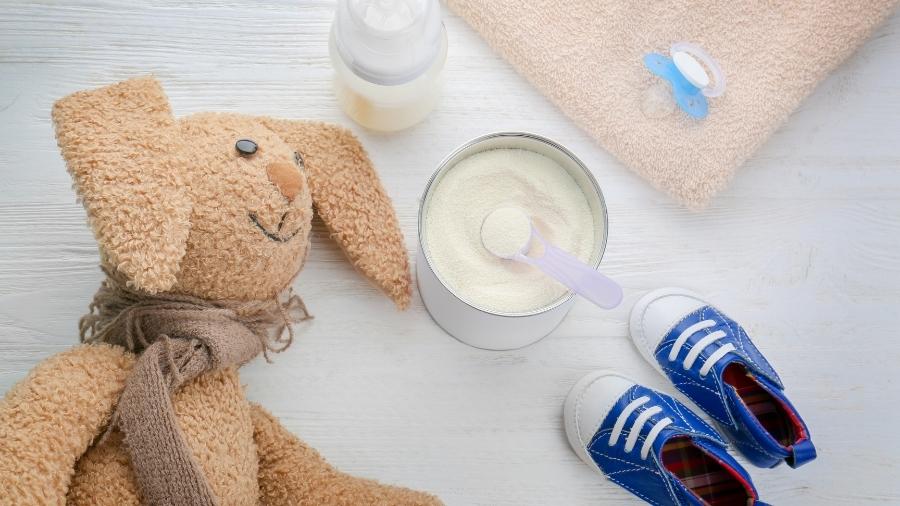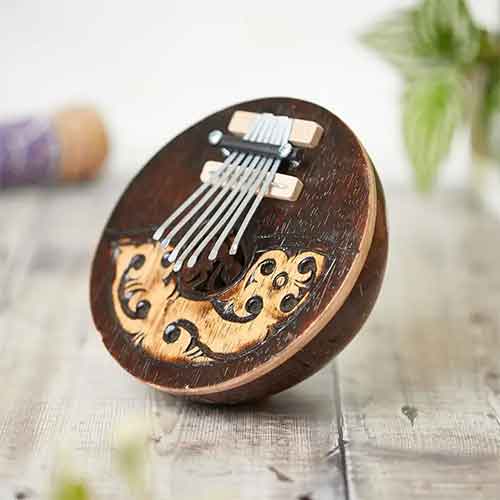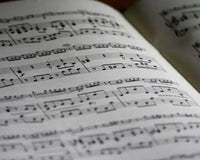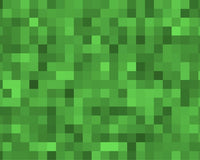Navigating the world of baby essentials can be both exciting and overwhelming for new parents. With countless products and recommendations available, it’s easy to feel lost in the sea of choices. That’s why we’ve created this comprehensive guide to the most popular baby essentials you need to know about in 2024. Whether you’re a first-time parent or looking to refresh your baby gear, this guide covers everything from choosing the right sleeping arrangements to essential feeding tools and the best options for your baby's daily needs.
In this complete guide, we’ll explore a range of topics designed to simplify your decision-making. Discover whether a Moses basket is still a must-have or if modern alternatives might be a better fit for your family. Learn about baby-led weaning and how this popular approach can benefit your baby’s development. Understand the differences between travel systems and stroller-car seat combos to make the best choice for your family’s lifestyle. Get tips on how to sterilize baby bottles effectively and find out which nappies provide the best protection and comfort for your little one.
1. Do Babies Need a Moses Basket?

Choosing the right sleeping arrangement for your baby can be overwhelming. A Moses basket, like the Palm Moses Basket with Folding Stand, offers a cozy, portable solution for newborns. Ideal for babies up to 9 kg, it features a soft, easy-care mattress and an adjustable hood. This stylish, strong basket is easy to use, clean, and maintain, making it practical for new parents.
To ensure safety, place your baby in their own sleep space, like a Moses basket or cot, in your room until they are about six months old. The Moses basket can be conveniently moved around your home, keeping your baby close and comfortable.
You can buy the Palm Moses Basket and Folding Stand here to provide your baby with a comfortable and safe sleeping space. The Moses basket can be placed in any room, providing convenience and peace of mind, ensuring your baby is close by and comfortable.
2. Cot vs Cot Bed: Which Should You Choose?

Once your baby outgrows their Moses basket, usually around 5 months, transitioning to a cot or cot bed is the next step. Cots are designed for infants and feature side panels to prevent falls, suitable until the child starts climbing out, typically around 24 months. They are a good short-term solution but have limited longevity. On the other hand, cot beds offer greater flexibility. Starting as a cot, they can be converted into a single bed and used until about age 8. This makes cot beds a more cost-effective and long-term option compared to traditional cots.
For a versatile and durable choice, consider the Babymore Eva Cot Bed. It provides a long-lasting solution as it converts from a cot to a single bed, making it ideal for growing children. If you need a more compact option, the Kinder Natural Wood Cot is a great choice for a secure and classic baby bed. For those who want to keep their baby close during the early months, a Next to Me Crib offers the convenience of co-sleeping without the safety risks, though it is smaller and will need to be replaced as your baby grows.
3. The Benefits of Swaddle Wraps

Swaddle wraps are a popular choice for new parents as they offer a comforting, secure feeling for babies, mimicking the snug environment of the womb. Available in gender-neutral designs, these wraps come in a pack of three, ensuring you always have a clean one on hand in case of spills or accidents. Made from 100% organic cotton, they are gentle on sensitive baby skin, free from harsh chemicals. The wraps stay securely in place, even if your baby wriggles, helping them sleep longer and more soundly.
Parents rave about these swaddle wraps for their effectiveness and adorable designs. Many have reported that their babies sleep better and longer, contributing to happier nights for both the little ones and their parents. Ideal as a gift for expectant parents, these wraps offer a blend of practicality and comfort that new families will appreciate.
4. The best foods for baby-led weaning

Introducing your baby to solid foods through baby-led weaning can be an exciting adventure. Start with soft, easy-to-hold foods like cooked and peeled potatoes, bananas, and other soft fruits such as raspberries, strawberries, and avocado. These options allow your baby to explore different textures and tastes safely. To add variety, consider including Original Farley’s Rusks, which are iron-rich and low in sugar, perfect for introducing new textures. Ella’s Kitchen Strawberry & Banana Puffs are a tasty, organic choice for babies 6+ months, while Kiddylicious Veggie Sticks offer a crunchy, gluten-free alternative to crisps.
For a sweet and healthy snack, Kiddylicious Apple Fruity Bakes made from real fruit are a great option. Organix Animal Biscuits are naturally sweetened with apple juice and ideal for toddlers 12 months and up. Organix Apple & Orange Oaty Bars provide a chewy texture rich in flavor, suitable for 12+ months. Additionally, Ella’s Kitchen Organic Baby Food pouches offer a convenient way to introduce various fruit and vegetable blends. Lastly, Kiddylicious Smoothie Melts, made from 100% fruit, make a delightful snack for toddlers 12+ months. Each of these options supports your baby’s development while offering a range of delicious tastes and textures.
5. How to Make Your Own Baby Food

Start by choosing your flavor combinations from options like strawberry and banana puree, peach and banana puree, carrot and potato puree, and baked sweet potato puree. Banana is a versatile staple, but you can mix and match as desired. To prepare, peel and chop fruits and vegetables, cook until soft, then blend until smooth.
Use a quality blender, such as the
6. Do You Need a High Chair for Weaning?

Every child starting weaning will benefit from a high chair to make the process comfortable and secure for both parent and baby. The high chair with feeding tray is a fantastic option, providing a secure strap and footrest for growing legs. Although the feeding tray might seem like a mess magnet during the early stages of baby-led weaning, it becomes a valuable tool later on. The high chair's design ensures it’s easy to clean, folds away for convenient storage, and can even serve as a seat for playing with toys while you tackle household chores. Its robust build guarantees it will last through all your weaning adventures.
7. What Spoon Should I Use for Weaning?

When it comes to feeding your baby, choosing the right spoon is essential for comfort and safety. While plastic spoons are common, they’re not eco-friendly, so opting for a more sustainable option is a great idea. Munchkin Weaning Spoons are a top choice with their soft silicone tips and heat-sensing feature, ensuring food is always at the right temperature. They come in a convenient 4-pack, are gentle on your baby’s gums, and their curved design makes mealtime easier.
For an eco-friendly alternative, bamboo spoons are an excellent option. They’re naturally antibacterial, BPA-free, and durable, avoiding issues like staining or warping that can occur with other materials. Bamboo spoons are also less likely to absorb liquids, making them a practical choice. If you prefer a high-quality, sustainable product, consider the Bamboo Feeding Spoon, which combines durability with a soft silicone tip to ensure a comfortable feeding experience for your baby.
8. Where Can I Get Feeding Bowls?

For a reliable and versatile feeding bowl option, Tommee Tippee Feeding Bowls (7m+, Pack of 4) are highly recommended. These bowls are perfect for transitioning your baby from bottle feeding to solids. They’re BPA-free and feature a triangular base to minimize spills. Safe for the microwave, dishwasher, and freezer, they offer convenience from food preparation to clean-up. The set comes in four vibrant colors that can make mealtime more engaging for your little one. Pair them with colourful spoons to increase your baby’s interest. These bowls are durable and designed to make feeding easier, turning mealtime into a more pleasant experience for both you and your baby.
9. How to Support Knife Skills

To support your child’s knife skills, start with the right cutlery. For toddlers, the Tommee Tippee Explora First Cutlery Set is an excellent choice. This set is lightweight, easy to grip, and features colorful handles that attract children. As they progress, consider introducing a Doddl Toddler Feeding Knife. This educational knife is designed for children aged 2 and up and helps improve their pincer grip while making self-feeding easier. It has a comfortable grip and a transparent edge for better visibility of the food. Allow your child to practice with these tools, and be patient as they develop their skills. By observing and practicing with their utensils, children typically start mastering the use of a knife and fork between ages 2 and 4. Praise their efforts and provide support as they learn this valuable skill.
10. Do You Need a High Chair Splash Mat?

If you want to protect your floor from mealtime messes, a high chair splash mat is a wise investment. The High Chair Splash Mat is an effective solution to keep your dining area clean. This grey plastic mat is designed to catch food and spills, preventing damage to your flooring. It’s waterproof, easy to wipe clean, and available in various designs and colors to match your home decor.
Using a splash mat during every meal helps manage accidental spills and makes cleanup easier. For added convenience, consider purchasing multiple mats so you always have a clean one ready while others are being washed. With its durable and practical design, the high chair splash mat will save you time and effort, ensuring a cleaner and more organized mealtime experience.
11.

To keep your baby's clothes clean during mealtimes and other messy activities, consider two top bib options: Waterproof Baby Bibs, which are vibrant, long-sleeved, and completely waterproof, making them easy to wipe clean and effective for bottle feeding, weaning, and teething. Each pack includes bibs in green, blue, red, and yellow, suitable for babies from 6 months to 3 years.
Alternatively, Handmade Dribble Buster Baby Bib, made from 100% cotton and free from allergens and chemicals, is gentle on your baby’s skin with a large diameter to catch dribbles and spills effectively. Featuring a floral motif and fastened with plastic poppers, it’s ideal for bottle feeding and weaning.
12. How to Store Leftover Food?

Tommee Tippee Food Storage Containers are essential for keeping your baby’s meals fresh and easily accessible. These BPA-free containers are dishwasher, microwave, and sterilizer safe, ensuring safe and convenient use. Each pack comes with three containers, so you can always have one ready while the others are being cleaned.
13. Where to Find Weaning Recipes?

For expert guidance on introducing solid foods, the Weaning Your Baby Book by Annabel Karmel is a must-have. This comprehensive book covers everything from baby-led weaning to preparing nutritious meals, with over 60 recipes tailored for babies aged 6 to 12 months. It also offers advice on allergies and combining flavors. Available in paperback and Kindle formats, it includes free UK delivery on orders over £10. Buy Weaning Your Baby Book (Hardback).
14. How to Sterilise Baby Bottles?

Sterilising baby bottles and feeding equipment is essential for protecting your baby from harmful bacteria, especially due to their underdeveloped immune systems. For an efficient and safe sterilisation method, consider the Tommee Tippee Bottle Steriliser. This BPA-free steriliser is designed to hold Tommee Tippee bottles and other equipment perfectly, using minimal water and sterilising up to five bottles in just five minutes. Simply add your equipment, fill to the indicated line, press the button, and let it do the work. Buy Tommee Tippee Bottle Steriliser.
Alternatively, Milton 1L Sterilising Liquid offers a reliable solution. It kills 99.9% of germs within 15 minutes and protects items from bacteria for up to 24 hours. To use, dilute 30ml of the solution in 5 liters of water, immerse your bottles and feeding equipment, cover, and leave for 15 minutes. Buy Milton 1L Sterilising Liquid. For a more hands-on approach, you can also use sterilising tablets by dissolving one tablet in 5 liters of water and soaking your equipment for 15 minutes. Buy Sterilising Tablets. These methods ensure that your baby's bottles and feeding items are free from bacteria, helping to keep your little one safe and healthy.
15. What are the best baby nappies?

When choosing the best baby nappies, consider Pampers Premium Protection for superior softness and absorbency, perfect for keeping your newborn dry and comfortable, especially overnight. For a more budget-friendly option, ALDI Mamia Nappies offer similar features, including a wetness indicator, at a lower price. If you're looking for nappies specifically for swimming, Bambino Mio Swimming Nappies are ideal with their water-resistant layer and leak-proof design, plus they are reusable and eco-friendly. Each option has its strengths, with Pampers being the top choice for overall comfort and performance, Mamia providing excellent value, and Bambino Mio being perfect for swim time.
16. What is the best baby changing bag?

When selecting a baby changing bag, affordability and practicality should take precedence over expensive, designer options. A great choice is the Black & Grey Changing Bag, a spacious, waterproof bag with adjustable straps and plenty of room for nappies, wipes, bottles, and personal items, all while being gender-neutral and easy to clean. Another option is the Multipurpose Rucksack, which includes a built-in USB charging port, waterproof pockets, and pram attachments for convenience on the go. For home and travel, the Infant Storage Caddy offers a lightweight, foldable design with 10 hidden pockets to organise diapers and other essentials, making it simple and efficient for busy parents.
17. What to Put in a Baby Changing Bag?
Once you’ve chosen your baby changing bag, it's essential to pack it with the right items to ensure you’re prepared for anything. Babies are unpredictable, so being without a necessary item can quickly turn into a disaster. Start with the basics: nappies, which you’ll need in abundance—at least 3–4 for a short trip and up to 12 for an overnight stay. Pair this with a feeding system like bottles if you're bottle-feeding or combining breast and bottle feeding. These bottles are designed to mimic the breast, helping babies transition smoothly, and are especially recommended for their anti-colic properties. For cleaning up, pack a full set of baby water wipes—these chemical-free, hypoallergenic wipes are perfect for sensitive skin and a must-have for any messy situation.
Other essentials include spare clothing like socks, mittens, and hats, as babies often need changes due to spills or leaks. A couple of dummies (pacifiers) can be a lifesaver for soothing a fussy baby, and a bottle brush is great to have on hand for cleaning bottles on the go. Packing all these essentials will ensure that you are ready for anything, keeping both you and your baby comfortable, clean, and happy during your time out.
Additional items include cotton muslins, nappy bags, milk powder dispensers, and reusable microfiber baby wipes. Muslins, made from soft 100% cotton, are highly versatile, ideal for wiping after feedings, swaddling, or cleaning up small messes. They are chemical-free and reusable, unlike some baby wipes. Disposable nappy bags with tie handles make diaper disposal hygienic and hassle-free. Milk powder dispensers help parents prepare formula on the go, ensuring proper storage and quick mixing. Teething toys are essential from around 3 months to help ease teething discomfort, and a baby-changing mat simplifies the frequent diaper-changing process. The waterproof mat ensures easy cleaning and comfort during changes, while antiseptic creams like Sudocrem or Bepanthen are essential for soothing and preventing nappy rash, providing relief for baby's sensitive skin. Together, these products cover the most vital aspects of daily baby care.
18. Travel System vs. Individual Stroller

When choosing how to transport your baby, it's essential to weigh the benefits of a travel system versus separate stroller and car seat components. A travel system bundles a buggy pram, car seat, footmuff, and Moses basket into one package, ensuring compatibility and simplifying the purchasing process. For example, the Hauck travel system costs around £150, while purchasing similar items individually—such as a carrycot, footmuff, car seat, and pushchair—can total approximately £230. This all-in-one approach offers convenience and often better value, particularly for new parents.
Alternatively, opting for separate items may be more suitable for those who prefer customisation or already own some components. Enhancements like a universal footmuff, breathable blanket, and stroller accessories such as a phone holder and cup holder can boost the functionality of an individual stroller. Additional items like a universal pushchair rain cover and jogger lightweight double stroller are practical for families with specific needs, such as twins or unpredictable weather. A newborn baby carrier offers flexibility and portability. Evaluating the convenience of an all-in-one system against the benefits of customised individual components will help determine the best choice for your family’s needs.
Baby Essentials (Frequently Asked Questions)
Can baby wear a bib in a car seat?
The ones that have to be tied shouldn’t be used as babies could pull on it and this could be a choking risk. These ones however are more of a top and are considered to be more safe. That being said you should always supervise your baby. Never leave a baby unattended with a bib or not unless you can assure that they are safe. We would highly recommend against using a bib for sleep time, as the job is not to provide comfort but instead to protect clothes and reduce mess.
How to ditch the dummy?
Ditching the dummy is recommended before your child’s first birthday to prevent speech development delays and potential dental issues. Using a dummy for the first six months helps reduce the risk of SIDS, but keeping it longer can stunt communication skills and lead to misaligned teeth. For babies under 12 months, going cold turkey is often effective, as they quickly adapt. For older children, easing into it by gradually removing the dummy during the day, then at naps, and finally at night can work best. While the process may seem challenging, it's important for their development, and they’ll quickly forget about it once it's gone.












